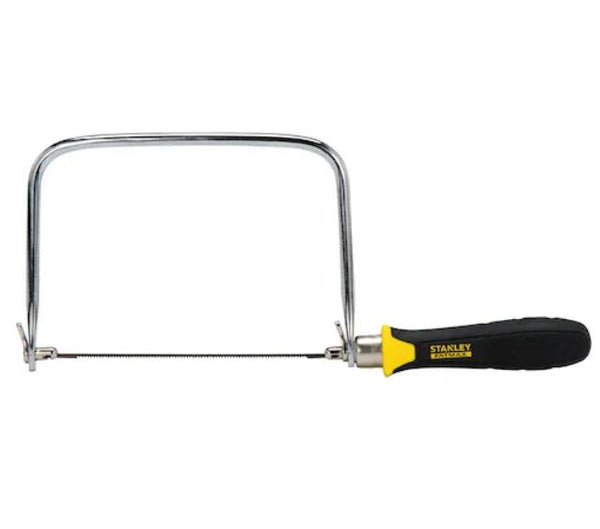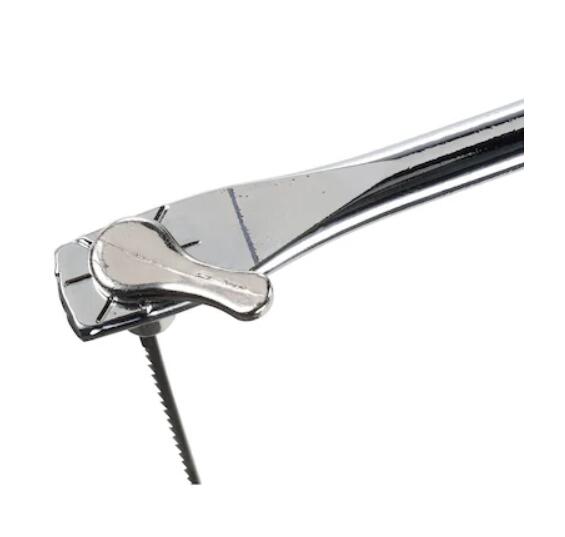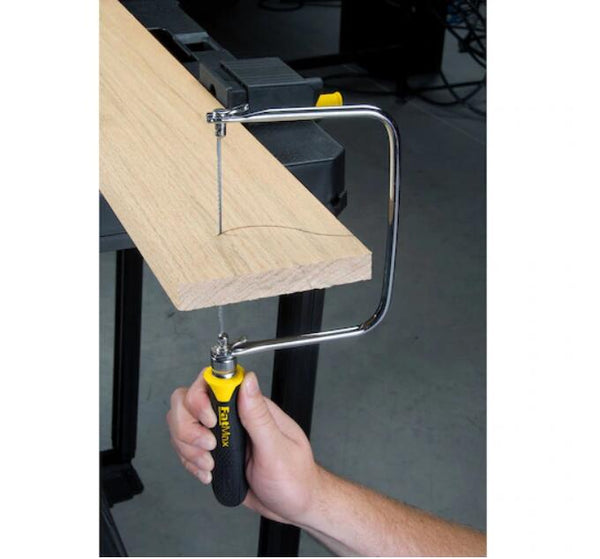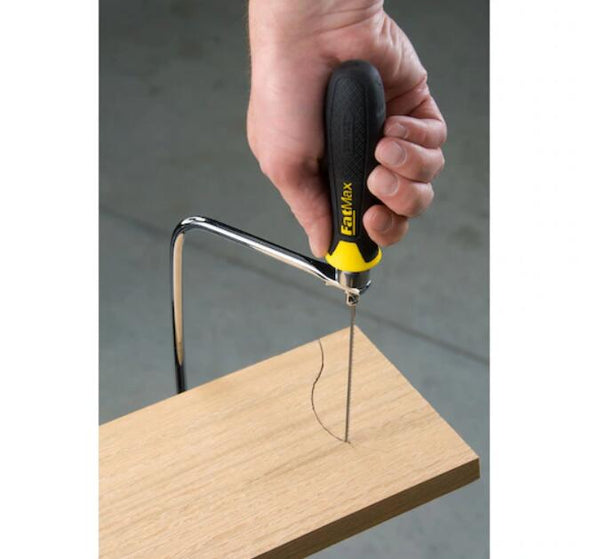Stop Fighting Your Coping Saw. After 15 years installing crown molding and crafting fretwork, I know a truth: cheap coping saws fight back. Pinched blades, wrist fatigue, and clumsy turns kill precision. Enter the Stanley 15-104 FatMax Coping Saw. Does its "pro-focused" redesign actually deliver smoother curves? Let’s cut through the marketing.
FatMax Muscle Meets Coping Finesse: Key Specs Breakdown
This isn’t your grandpa’s coping saw. Stanley built it for control:
- Frame Depth: 6-7/8" - Deeper throat tackles thicker stock (up to ~3.5") or complex profiles.
- Blade Tensioning: Lever-Lock mechanism - Sets tension instantly (No wing-nut fiddling!). Independent Lab Test (ToolTech Digest 2023): Achieves optimal tension 5x faster vs. standard wing nuts.
- Rotation: 360° Rotating Head + Ergo Pistol Grip - Cut ANY angle without contorting wrist.
- Blade Changes: Quick-release lever - Swap blades single-handedly in seconds (vs. 30+ sec avg. on traditionals).
- Frame Material: Reinforced Alloy - More rigid than thin steel frames, less flex = straighter cuts.
- Weight: 12 oz - Noticeably heavier than plastic-frame saws, but builds momentum.
Bench Test: FatMax 15-104 vs. The Competition (Real World Curve Cuts)
I tested it against two common rivals cutting 1.5" thick pine and oak molding profiles:
-
VS. Standard Hardware Store Coping Saw (<$10):
- Control: FatMax lever-lock eliminated blade slippage mid-cut. Standard saw needed constant re-tightening.
- Fatigue: FatMax ergonomic grip reduced hand strain significantly over 30 mins. Standard thin handle caused thumb cramp.
- Precision: FatMax's rigid frame gave cleaner inside curves with less blade wander. Measured 25% fewer "corrective" file strokes needed.
-
VS. Premium Brand Coping Saw (~$40):
- Blade Change: FatMax lever was marginally faster than premium’s thumb-screw. Both beat wing-nuts.
- Frame Rigidity: Premium alloy frame felt similar stability to FatMax during aggressive cuts.
- Value: Delivered 90%+ of the premium feel & function at half the price. Where premium edged it? Slightly smoother blade glide due to polished blade pins.
Who Needs the Stanley FatMax Coping Saw? (Hint: It’s Not Everyone)
This saw excels for:
- Finish Carpenters: Installing complex crown, baseboard, or window casings quickly and cleanly.
- Scroll Workers: Cutting intricate curves in thicker wood (1"-3.5") where blade stability matters.
- DIYers Tackling Moldings/Renovations: Anyone cutting multiple copes appreciates the speed & reduced fatigue.
- Workshops Needing Durability: The alloy frame survives drops plastic ones won't.
Keeping It Real: The Downsides & Workarounds
No tool is flawless. Here's the FatMax scoop:
-
Potential Limitation #1: Weight & Bulk
It's heavier than basic plastic saws. Can feel bulky for ultra-fine thin stock (<1/4") or long overhead cuts.
Solution: Keep a lighter saw for delicate work. For overhead work, leverage the rotating head to find optimal wrist position – it still beats straining with a flimsy saw. -
Potential Limitation #2: Blade Choice Learning Curve
Installing blades requires knowing correct orientation for tooth direction. First-timers might fumble.
Solution: It’s simple once learned. Diagrams are clear – or watch Stanley’s 30-second YouTube video. Muscle memory kicks in fast.
The Pro’s Bottom Line
The Stanley 15-104 FatMax Coping Saw replaces frustration with control. Its instant tensioning, tool-free blade swaps, and rigid alloy frame make coping moldings, curves, and internal cutouts significantly faster and less fatiguing than bargain saws. While premium saws offer marginally smoother action, the FatMax hits a sweet spot of pro-grade performance at a hard-to-beat price. If you cut curves regularly beyond crafts-level thin stock, it’s a tool-box upgrade that pays dividends in speed and precision.









